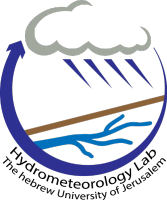Abstract:
The quantification of spatial rainfall is critical for distributed hydrological modeling. Rainfall spatial patterns generated by similar weather conditions can be extremely diverse. This variability can have a significant impact on hydrological processes. Stochastic simulation allows generating multiple realizations of spatial rainfall or filling missing data. The simulated data can then be used as input for numerical models to study the uncertainty on hydrological forecasts. In this paper, we use the direct sampling technique to generate stochastic simulations of high-resolution (1 km) daily rainfall fields, conditioned by elevation and weather state. The technique associates historical radar estimates to variables describing the daily weather conditions, such as the rainfall type and mean intensity, and selects radar images accordingly to form a con- ditional training image set of each day. Rainfall fields are then generated by resampling pixels from these images. The simulation at each location is conditioned by neighbor patterns of rainfall amount and eleva- tion. The technique is tested on the simulation of daily rainfall amount for the eastern Mediterranean. The results show that it can generate realistic rainfall fields for different weather types, preserving the temporal weather pattern, the spatial features, and the complex relation with elevation. The concept of conditional training image provides added value to multiple-point simulation techniques dealing with extremely non- stationary heterogeneities and extensive data sets.
Website

